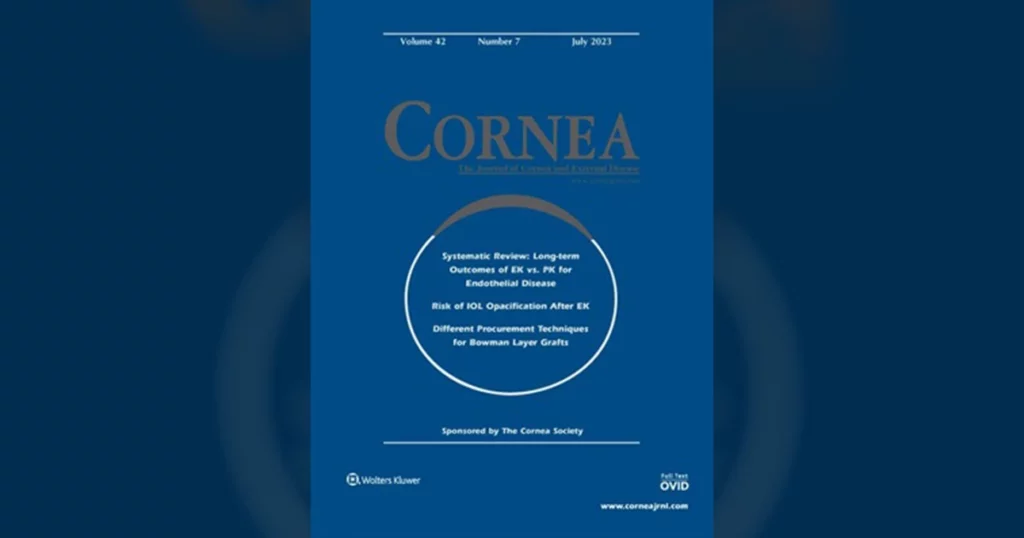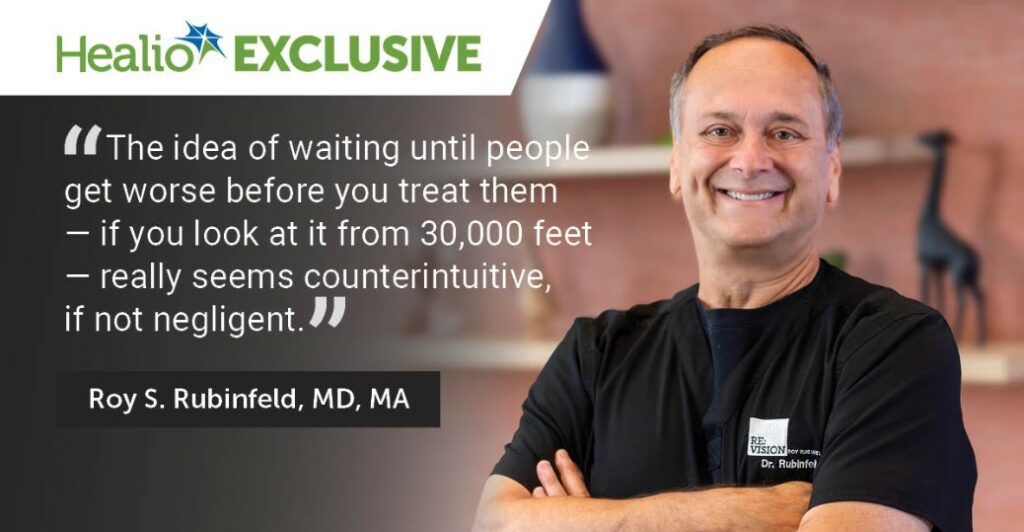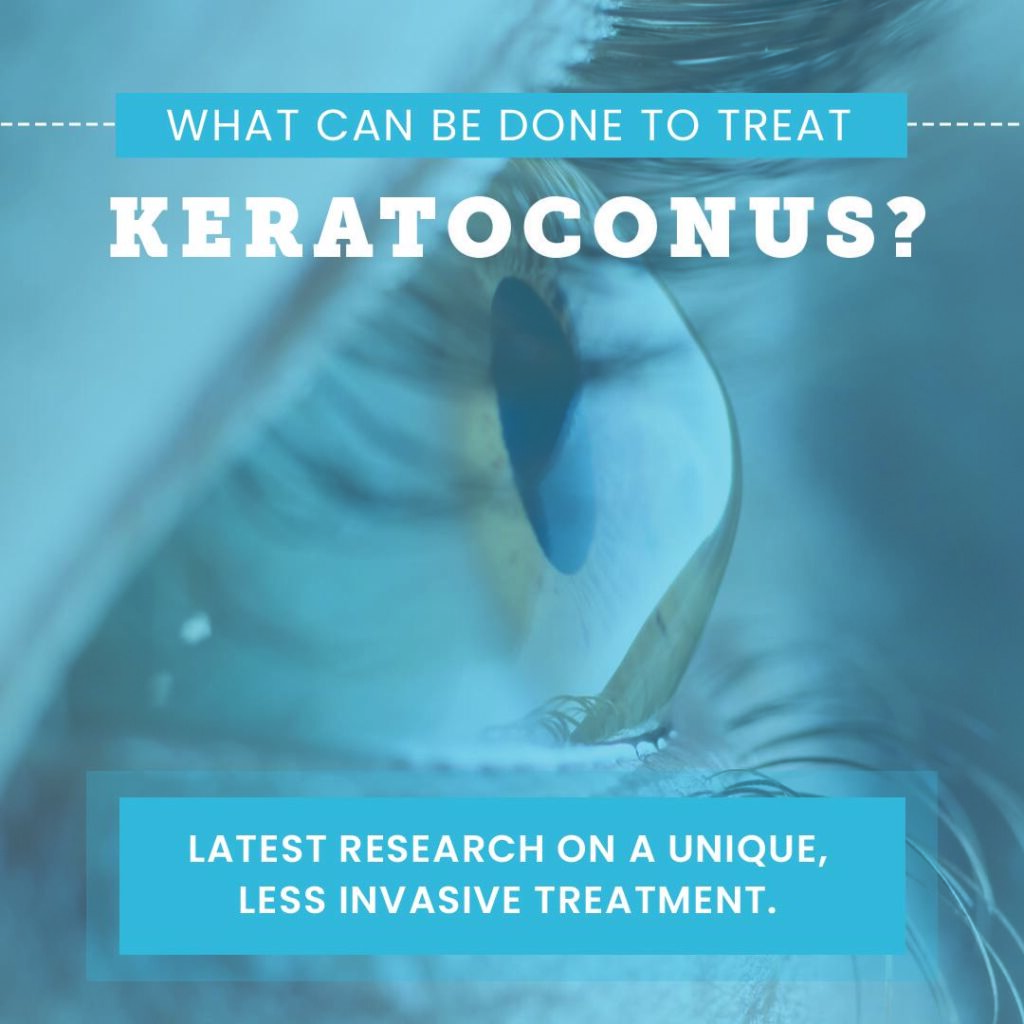Today, a groundbreaking study will appear in print in Cornea. It is the culmination of 14 years of collaborative, international hard work and what we believe is a roadmap to the future of keratoconus and ectasia treatment. I’m beyond excited to offer a sneak peek on what this study concludes.
EpiSmart® Crosslinking for Keratoconus: A Phase 2 Study
Randy J. Epstein, MD; Michael W. Belin, MD; Deborah Gravemann, RN, CCRP; Roxanne Littner, MS; and Roy S. Rubinfeld, MD, MA
Conclusions
This [FDA study reporting on 2,238 subjects] examined the response of…patients with keratoconus to an “epi-on” CXL procedure using a novel technique for riboflavin delivery and…variations of UVA exposure protocol. Robust improvements were observed in visual acuity sustained over 12 months in a keratoconus population…including a large subset of young subjects 21 years old or younger…The results support our contention that this represents a safer, non-invasive crosslinking to arrest the progression of keratoconus.
Keratoconus occurs in 1.4% of 20-year-old westerners and between 4 and 7% of those in the developing world. This technology can change their treatment from surgical removal of the surface of the cornea, one eye at a time with a painful, long recovery to a non-invasive treatment that allows both eyes to be treated at one time and return to normal activities the next day. Please feel free to reach out with questions or comments.
I’m proud to share this but no work of this magnitude is done in a vacuum. We stand on the shoulders of others and this builds on my previous work as well that of so many others. I wish to gratefully thank some of those that have helped us get here. Apologies for those I missed.
Thank You!
Bruce Allen, Renato Ambrosio, Arthur, Shamik Bafna, Walter Beebe, Michael Belin, Gregg Berdy, Brad Bowman, Carlos Buznego, Ciro Caruso, Michael Choi, Janet Conway, Cummings, Kevin Daly, Arvin Daneshmand, Kristen Davenport, Jonathan Davidorf, Elizabeth Davis, Ray Hartman (deceased), John Gleason, Judy Gordon (deceased), Mark Heller (deceased), Bruno Edel, Barry Eiden, Randy Epstein, Randy Epstein, Sandy Feldman, Lance Forstot, National Keratoconus Foundation, Henry Gelender, Subba Gollamudi, Dan Goodman, Daniel Gore, Eric Grasshoff, Debi Gravemann, Adrienne Graves, Michael D Griffin, Erich Groos, Glenwood Gum, Aubrey Haddach, David Hardten, Brad Hartman, Kathryn Hatch, National Institutes of Health, Geoffrey Hervey, John Hovanesian, Albert Jun, John Kanellopoulos, Ken Kenyon, Deborah Kim, Mark Kontos, Wayne Korteweg, Colby Kraff, Gaston Lacayo, Erik Letko, Richard Lindstrom, Roxanne Littner, Jodi Luchs, Susan MacDonald, Parag Majmudar, Ranjan Malhotra, James D Malley, Karen G Malley, Mark Mandel, Cosimo Mazzota, Ty McCall, Seth Meskin, Kirsten Midgely, Andrew Morgenstern, Reza Mozayeni, Michael Mrochen, Marc Odrich, Carmine Ostacolo, Jai Parekh, Steve Parks, Ed Parsons, Hank Perry, Katherine Proctor, Sherman Reeves, Karolline Rocha, Steven Rosenfeld, Audrey Talley Rostov, Marc Safran, Marc Safran, Erika Savio, Ira Shivitz, Evan Schoenberg, Jay Schwartz, Mark Shupe (deceased), Mazen Sinjab, Everett Smith, Everett Smith, International Keratoconus Society, Uri Soiberman, Maxwell Viner Stein, Raymond Stein, Doyle Stulting, Briana Swanson, Jon Talamo, Shachar Tauber, Joe Tauber, Bill Trattler, Jenny Turner, Neel Vadya, Michael Vrabec, Kirstin Wagner, Dave Wallace, George Waring IV, Mark Whitten, Bob Wiesenthal, Bill Wiley, International Keratoconus Academy, the staff and study coordinators of all investigators.




